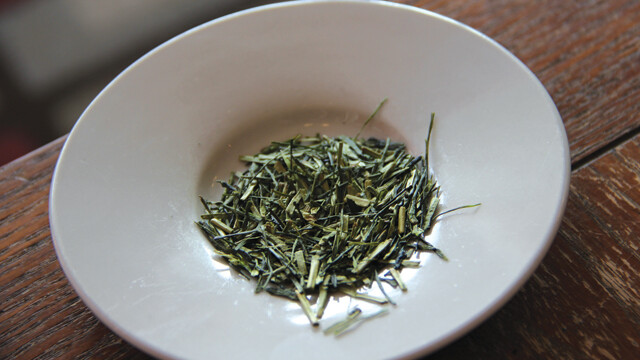Pinkies Up
the health benefits of drinking maté tea, as opposed to soda

Raise your hand if you drink soda. OK, put your hands down and consider an alternative – an alternative that may inspire you to raise your pinky in fine fashion – and that can give you the caffeine you may desire along with loads of other health benefits. Think tea.
It's the new year, and most people have started thinking about their health (and hopefully haven't stopped quite yet). One of the most drastic changes you can make for you health is to stop drinking pop. Each can of soda (classic Coke, as an example here) can have about 39 grams of sugar or more. Drink two cans per day six days per week and that's enough sugar calories to make you gain 27.6 pounds over the course of the year. Whoa. Stop the pop and switch to tea. Here's why – in more scientific and specific terms.
Maté tea may be a well-kept secret around the Midwest, but its popularity is growing. This sustainable, shade-grown herb from the Amazon is known for its stimulating, energizing benefits. With more caffeine than coffee, some might suspect it would have them dancing a jig half-naked around the office in no time. Although we can't promise you won't do a little ditty, this tea usually doesn't incite the same jitters and crashes associated with caffeine (and certainly not the same rock bottom feeling from 40 grams of sugar). Maté tea contains 11 polyphenols (powerful antioxidants) in amounts nine times greater than green tea, and double what the acai fruit can claim. Maté tea also gives you vitamins A, C, E, B1, B2, Niacin (B3), B5, and minerals like calcium, manganese, iron, selenium, potassium, magnesium, and phosphorous. During cold and flu season, be glad that this grassy tea also has saponines which help stimulate your immune system – all without the suppressing symptoms of a sugar high.
So the next time you think of grabbing a lime green, corn-syrupy beverage, reach for this natural energizing beverage. It may not be magic, but it may just help you improve your health.
Healthy to a Tea:
the benefits of different tea familiesBlack tea: (100% oxidation/60-90mg caffeine per cup) This classic tea accounts for the majority of western tea sales, and includes common blends like English Breakfast, Earl Grey, and Masala Chai.
Oolong: (20-70% oxidation/50-75 mg caffeine) Oolong tea flavors range widely due to the horticulture and production of tea. They are popular in blends, in particular the infamous Dark Chocolate Peppermint Oolong over at Infinitea. It’s like sipping a thin mint cookie!
Green tea: (0% oxidation/35-70mg caffeine) Two major kinds of green tea, Japanese and Chinese, contain powerful antioxidants and polyphenols, especially EGCG. EGCG has been shown to fight and even kill cancer cells; it may also help lower LDL cholesterol.
White tea: (0% oxidation/30-55mg caffeine) Using very young tea leaves means less processing and more health benefits retained. White tea has a light, mild flavor, and mixes well with fruits.
Rooibos: (No caffeine) This South African tea is now available in many countries, sometimes known as redbush tea. It has similar health benefits with many antioxidants and has a naturally sweet and sometimes nutty flavor.






















